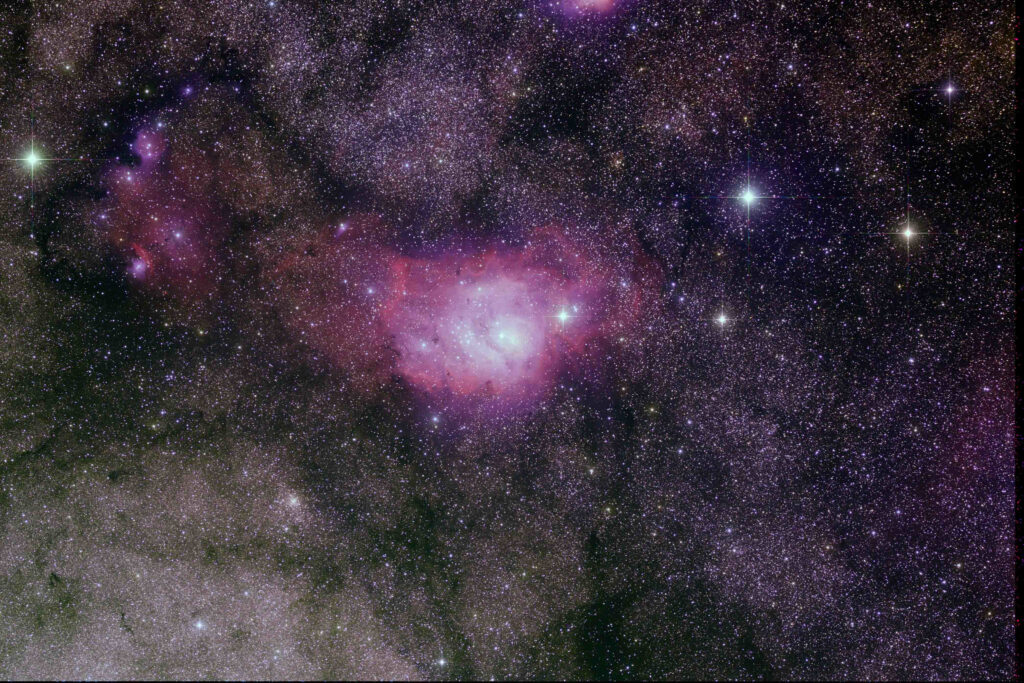“Lift up your eyes and look to the heavens: Who created all these? He who brings out the starry host one by one and calls forth each of them by name. Because of his great power and mighty strength, not one of them is missing." Isaiah 40:26
The Lagoon Nebula in Sagittarius captures the indescribable wonder and beauty of the central region of our Milky Way galaxy. The brown areas are vast regions of billions of stars densely clustered in the central region of our galaxy. The clouds themselves elicit awe, but even more so when they are viewed not as clouds, but as the countless billions of suns that comprise them.
Why is the nebula red? Countless hydrogen atoms have been “ionized” by having their sole electron stripped away by absorbing high-energy ultraviolet photons emitted by the hot young stars in the middle of the nebula. These bachelor electrons quickly reconnect with hydrogen nuclei (protons), and cascade down the energy levels toward the ground state, emitting a photon of a discreet amount of energy as they do (as predicted by the Danish physicist Neils Bohr in the early 20th century). The absorption and emission of countless photons causes the nebula to glow in all directions, converting pinpoints of light (the interior stars) into a shimmering cloud of light. The light is predominantly red in color because the photons emitted by electrons transitioning from the third to the second energy levels in hydrogen atoms have a wavelength of 656 nanometers, which the human eye sees as red.
The entire nebula is huge, spanning some 140 light years (850,000,000,000,000 miles) at a distance of 4,100 light years from Earth. The nebula’s angular width in the sky is 90 arcminutes, or three times the width of a full Moon. However, only the core can be seen, under dark skies.
This image is especially clear and sharp due to the fact that the nebula was at an altitude of 81 degrees, or nearly straight overhead, when I took the image. This results in light from the image passing through a greatly reduced amount of Earth's atmosphere, yielding a sharp, relatively undistorted, image.
The "Lagoon Nebula" (M8) in Sagittarius
Date Taken:June 8, 2014
Location Taken:Siding Spring Observatory, NSW Australia
Conditions of Location: Equipment Used:Takahashi FSQ-106 apochromatic refractor, Paramount ME mount, SBIG STL11000 CCD camera, Astrodon LRGB filters
Processing Used:10 x 5 minute images using a luminance filter. Clouds prevented me from adding red, green, and blue for a full-color image. I will add color the next clear, moonless night.
Distance from Location:4,100 light years
Constellation:Sagittarius
Other Link:
